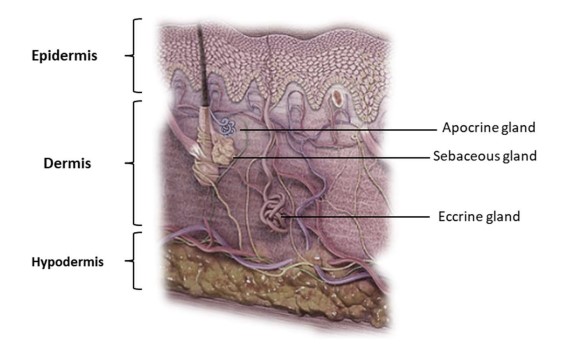Integumentary System Diseases
The symptoms of integumentary system diseases include skin rashes, itching, redness, inflammation, pain, scaling, hair loss, and nail abnormalities. Developing effective therapies for integumentary system diseases is challenging. Our company has been providing reliable solutions to pharmaceutical companies for many years and has extensive experience in the development of therapies for integumentary system diseases.
Overview of Integumentary System Diseases
The integumentary system plays a crucial role in protecting our body from external factors and maintaining homeostasis. However, various diseases can affect this system, leading to significant discomfort and impairment. Integumentary system diseases encompass a wide range of conditions that affect the skin, hair, nails, and associated glands. Skin disorders are among the most common integumentary system diseases, including eczema, psoriasis, acne, dermatitis, and fungal infections. Hair and nail disorders, such as alopecia and onychomycosis, are also part of this category.
Pathogenesis of Integumentary System Diseases
Integumentary system diseases can arise from various factors, including genetic predisposition, environmental triggers, autoimmune responses, infections, hormonal imbalances, and lifestyle factors.
- Environmental triggers, such as allergens, irritants, and UV radiation, can exacerbate symptoms in conditions like eczema and dermatitis.
- Genetic factors play a significant role in many integumentary system diseases. For example, psoriasis has a strong genetic component, with certain genes influencing immune responses and skin cell turnover.
- Autoimmune responses contribute to diseases like systemic lupus erythematosus, where the immune system mistakenly attacks healthy skin cells.
- Infections caused by bacteria, viruses, or fungi can also lead to skin disorders, such as cellulitis or fungal skin infections.
 Fig.1 The integumentary system. (Inchingolo, A. D., et al., 2021)
Fig.1 The integumentary system. (Inchingolo, A. D., et al., 2021)Therapy Development for Integumentary System Diseases
Drug Therapy
Targeted topical therapies, including creams, ointments, lotions, or gels containing active ingredients that reduce inflammation, alleviate symptoms, and promote healing. Systemic medications, such as oral tablets or injections, are used when the disease affects a larger area of the skin or when topical therapies are not sufficient.
Immunomodulatory Therapy
Immunomodulatory therapies focus on modulating the immune response, especially in autoimmune skin disorders. These therapies aim to regulate the overactive immune system and reduce inflammation. Biologic therapies, such as monoclonal antibodies, have shown promise in conditions like psoriasis and atopic dermatitis.
Phototherapy
Phototherapy involves exposing the skin to specific wavelengths of light, such as ultraviolet (UV) radiation. This controlled exposure can help reduce inflammation, slow down abnormal cell growth, and alleviate symptoms in conditions like psoriasis and vitiligo.
Regenerative Therapy
Regenerative therapies aim to promote tissue healing and regeneration. These therapies can include the use of growth factors, stem cells, or tissue engineering techniques to restore damaged skin, hair follicles, or nails.
Our Services
Several molecular targets have been identified as potential therapeutic candidates for various integumentary system diseases. These include cytokines, growth factors, enzymes, cell signaling pathways, and immune system components. By targeting these specific molecules, we aim to develop diagnostics and innovative therapeutics that can modulate the disease processes effectively.
Rare Types of Integumentary System Diseases
| A-E | ||
| Actinic Prurigo (AP) | Alopecia Areata (AA) | Chromhidrosis |
| Adiposis Dolorosa | Argyria | Epidermolysis Bullosa (EB) |
| H-N | ||
| Harlequin Ichthyosis (HI) | Ichthyosis | Necrobiosis Lipoidica (NL) |
| Lamellar Ichthyosis (LI) | Mycosis Fungoides (MF) | Necrobiosis Lipoidica (NL) |
| O-V | ||
| Olmsted Syndrome (OLMS) | Pemphigus | Sezary Syndrome (SS) |
| Psoriasis | Schnitzler Syndrome | Stevens-Johnson Syndrome (SJS) |
| Vitiligo-Associated Multiple Autoimmune Disease Susceptibility 6 (VAMAS6) | ||
Therapy Development Platforms
Our company is committed to advancing the development of therapies for integumentary system diseases. We provide comprehensive preclinical research services, including animal model construction, drug safety evaluation, and pharmacokinetic analysis, to support the discovery and development of new therapies for these diseases.
If you are interested in our services, please feel free to contact us for more details and quotation information of related services.
Reference
- Inchingolo, A. D., et al. "The integumentary system and its microbiota between health and disease." J. Biol. Regul. Homeost. Agents 35 (2021): 8.
All of our services and products are intended for preclinical research use only and cannot be used to diagnose, treat or manage patients.
